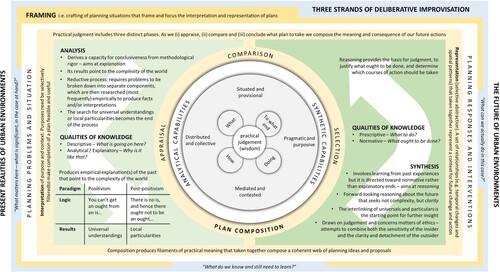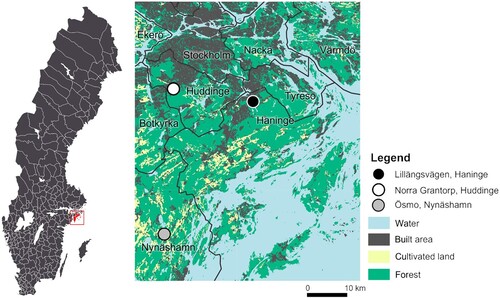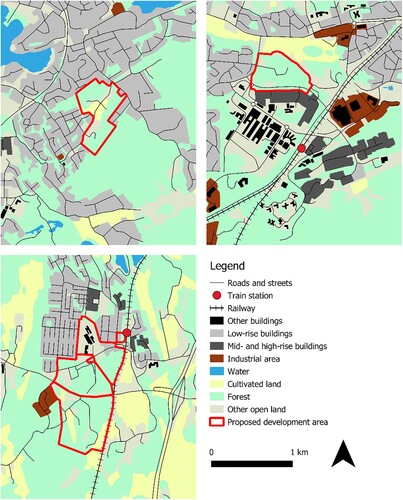Figures & data
Figure 1. A conceptualization that illustrates co-existing theoretical perspectives on planning craftsmanship. Planners approach the task of transforming initiatives into urban development plans by accomplishing practical judgements (Davoudi Citation2015, grey) to guide iterations between analysis and synthesis (Campbell Citation2012, green) throughout the act of plan composition (Hoch Citation2009, light/dark gold) and to engage in deliberative improvisation (Forester Citation2019a, blue).

Figure 2. Sweden's 290 municipalities (left) and a land use map of the southern parts of the Stockholm region showing the location of the development areas (right).

Table 1. Main characteristics of the three municipalities (Adapted from: National Board of Housing Citation2014, Citation2015, Citation2016, Citation2017, Citation2018; Södertörnsmodellen Citation2016; Statistics Sweden Citation2018; Swedish Association of Local Authorities and Regions Citation2016).
Figure 3. Land use maps of Lillängsvägen (upper left), Norra Grantorp (upper right) and Ösmo (lower left).

Table 2. Ten local level detailed development planning pathways.
Figure 4. Conceptualization of planning work as a practice of process design. This explorative-navigational combo constitutes an important part of a planner’s repertoire and allows for scanning the contextual premises for spatial development across multiple domains (i.e. contextualization) and to envision a process trajectory by deciding upon a course of action throughout the planning process (i.e. concretization).

